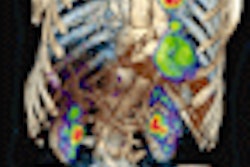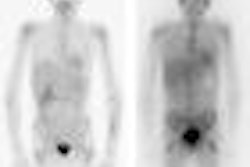Radiology and Imaging Sciences at the National Institutes of Health (NIH) Clinical Center has taken a step to further safeguard its clinical research patients who are exposed to radiation during certain imaging tests.
CT and PET/CT equipment purchased by the center now will be required to routinely record radiation dose exposure in a patient's hospital-based electronic medical record.
Dr. David Bluemke, director of Radiology and Imaging Sciences at the Clinical Center, NIH's clinical research hospital in Bethesda, MD, noted that CT and PET/CT scanners currently do not forward data on radiation dose to the center's RIS.
The NIH added that its ability to keep track of an individual's exposure to radiation through routine imaging tests is needed so that researchers can begin to determine if these exposures pose a health risk.
Dr. Ronald Neumann, chief of nuclear medicine and deputy associate director for imaging sciences at the center, noted that ultimately radiation dosage could become a standard element of a universal electronic medical record used to assess radiation risk from lifelong medical testing.
The NIH Clinical Center's imaging program will work with vendors who supply the center's imaging equipment to develop software tools to extract the examination type, date, and radiation dose exposure from CD-ROM to upload to a personal health record.
About 25,000 CT and 1,250 PET/CT scans are performed at the center each year as part of NIH research protocols. The clinical research hospital currently houses five CT scanners and two PET/CT scanners.
Related Reading
NIH funds two imaging research centers, October 21, 2008
Zerhouni to leave as head of NIH, September 24, 2008
NIH navigates 'perfect storm' in 2006, November 16, 2006
NIH leader: Imaging will advance pure science to reduce real healthcare burden, May 9, 2006
NIH director lays out case for reform, March 18, 2005
Copyright © 2009 AuntMinnie.com




















